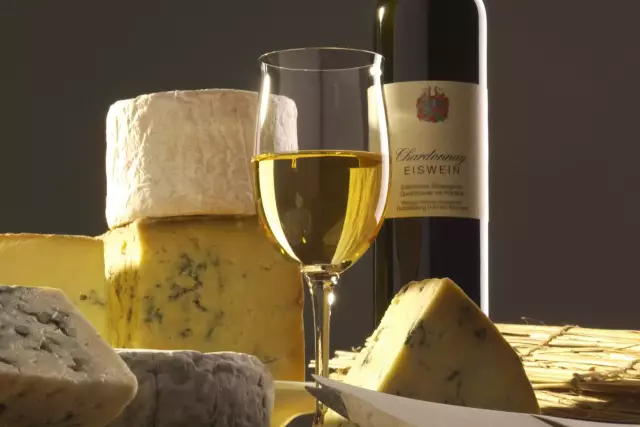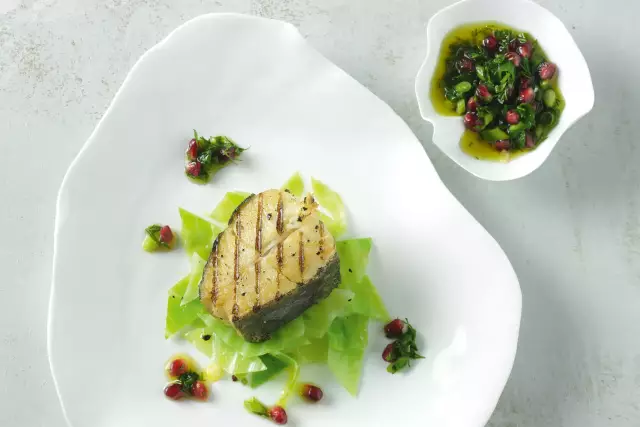Aspargus & Wine

Asparagus's slightly bitter notes can, however, make it a tricky partner when it comes to wine. It often clashes when paired with the standard fruit-driven varietals. Possible alternatives: Silvaner, Weißburgunder, Grauburgunder and Rivaner (Müller-Thurgau). With their round acidity and delicate fruity aromas — reminiscent of pears, apples, nuts and flowers — they lull these savory stalks into submission, even coaxing out a bit of sweetness.
Facts
-
1 cm
per day asparagus grows at the start of the season
-
20-25 days
asparagus needs until it is "fully grown"
-
June 24
end of asparagus season
-
29.000 ha
asparagus cultivation area in Germany
Wine and Asparagus Pairings
White Asparagus – classic 'Spargel' is a true delicacy with its distinctive juxtaposition of mild, almost sweet and pleasantly bitter flavors. The subtle aromas of Silvaner from Rheinhessen or Franken, as well as Gutedels from Baden provide flavor-rich asparagus with plenty of room to move and breathe.
Violet Asparagus – with slightly richer aromas than its snow-white sibling, and a correspondingly deeper bitter note as well. Weißburgunder, such as a bottle from Baden or a fresh Rivaner from Franken, serve as excellent pairing companions.
Green Asparagus – the color is more intense, as are the aromas. Rich aromas require a wine of suitable and similar weight. Pfalz Rieslings and powerful Grauburgunder and Chardonnay (unoaked) make an ideal complement.
Sauces – the classics include melted butter, chopped eggs, Hollandaise and tartar. Rich sauces benefit from the contrast of a zippy wine pairing. While the fine spirited acidity in Mosel Rieslings serves to lighten a rich sauce, spicier versions demand a wine of considerable expression.
Salads – Asparagus with a mild vinaigrette or a mildly spiced dressing. If using vinegar, try white wine vinegar mixed with a bit of the asparagus broth. Mild vinaigrette pairs beautifully with a Silvaner from Franken or an off-dry Rheingau Riesling, whose playful acidity ensures that its voice sings bright and clear.
Asparagus with Fish, Meat and Ham
Fish with Asparagus – fresh salmon or arctic char, poached or lightly sautéed in butter, with a touch of Hollandaise sauce — it doesn't get much better than this! Elegant, expressive yet still slightly savory aromas require a balanced wine pairing: A friendly Weißburgunder from the Pfalz or a refreshing Rivaner from Franken represent ideal companions.
Pork – milder when cooked, while the traditional cured variety (from Italy or Spain) delivers a slightly nuttier yet mild spice. The sweet nuances of the asparagus and the saltiness of the ham form beautiful gustatory counterpoints. We recommend Sauvignon Blanc or Silvaner with a delicately fruity character.
Savory meats ask a lot of the fine aromas of the asparagus. Veal or pork cutlet, or a mildly spiced roast, can feature an expressive range of aromas. There are also expressive, robust wines with the rich aromatic range to more than hold their own. For a truly delicious pairing try Weißburgunder, Grauburgunder or Chardonnay such as those from Baden.
Ideas for an Open Air Asparagus Picnic
White wines that pair well with asparagus dishes should be served appropriately chilled. Whether at home or in a restaurant, there's always a solution: Should you find yourself on the beach, bury the chilled bottle in wet sand, or take advantage of the cold from a nearby brook. Or take a peek at one of our wine cooling bags, sleeves or chillers (available in the DWI Gourmet shop). Once pre-chilled in the refrigerator, they keep white wine at a proper serving temperature for a good long while.
So how best to prep the asparagus? Simply, with Hollandaise sauce and baby potatoes? Or a bit more daring: cooked al dente and wrapped in cured, thinly sliced ham (Black Forest, San Daniele, Bayonne, Serrano - whatever suits your taste). For extra flair, pair with a mild mayonnaise dip accented with yogurt, lemon juice, capers and parsley.
If you would prefer a picnic in the park, and the journey from oven to blanket is not too far, then try filling a puff-pastry with asparagus and dot it with plenty of butter and spice (salt, pepper, nutmeg). Bake in a hot oven and wrap up in aluminum foil to keep warm, or lay on a pan for transport to the park.
A refreshing option: a salad of asparagus, baby potatoes, smoked fish, and a few pieces of lemon and lemon juice dressing, olive oil and mustard, a pinch of sugar, cayenne pepper and salt to taste. Fill into a canning jar, or into several small jars, one for each diner. Any of the asparagus wines will make a beautiful pairing. And now: Enjoy the fresh air!
Why is asparagus called "white gold"?
Asparagus has been grown and consumed since the 16th century. At that time it was the vegetable of the nobility, because asparagus cultivation was costly and the price was correspondingly high. Therefore, asparagus is still called the "noblest" or "king of vegetables", but also "white gold".
Varietals

More recipe ideas
with bulgur Cabbage stew
with bulgur
- 200 Gramm Zwiebeln
- 1 ganze Knoblauchzehe
- 800 Gramm Spitzkohl
- 200 Gramm Möhren
- 400 Gramm festk. Kartoffeln
- 1 EL Kümmelsaat
- 1,5 Liter Gemüsefond
- 5 EL Olivenöl
- 2 EL Tomatenmark
- 2 EL edelsüßes Paprikapulver
- 3 TL Honig
- nach Belieben Salz & Pfeffer
- 120 Gramm grobe Bulgur
- 1 Bund Petersilie
- 4 Stiele Minze
- 1 ganze Zitrone
- 2 ganze Äpfel
- 3 EL Obstessig
Finely dice the onions and garlic. Clean, wash and quarter the cabbage, remove the stalk and roughly chop the cabbage quarters. Peel the carrots, halve lengthways and cut into approx. 2 cm wide pieces. Peel the potatoes and cut into approx. 2.5 cm pieces. Fry the carrots in a pan without fat and set aside.
Heat the vegetable stock in a small pan. Heat 3 tablespoons of oil in a large pan, sauté the cabbage in it for 10-15 minutes over a high heat until dark brown and remove from the pan.
Add the remaining oil to the pan. Fry the onions and garlic until translucent. Add the potatoes and muesli and sauté for 3-4 minutes, stirring constantly. Add the tomato purée and paprika powder and fry while stirring. Add the cabbage, honey and caraway and pour in the hot vegetable stock. Season with salt and pepper. Bring to the boil, cover and simmer for 45 minutes. Add the bulgur 20 minutes before the end of the cooking time.
Quarter the apples, remove the seeds, cut into approx. 1 cm cubes and add 10 minutes before the end of the cooking time. Pluck the herbs and chop medium-fine. Wash and dry the lemon, finely grate the zest and mix with the herbs. Flavour the stew with vinegar, salt and pepper and serve sprinkled with the herbs.
Tip: The pointed cabbage must be roasted really strongly and dark so that the aromas come out well.
- Spätburgunder / Pinot Noir (trocken)
- Trollinger (trocken)
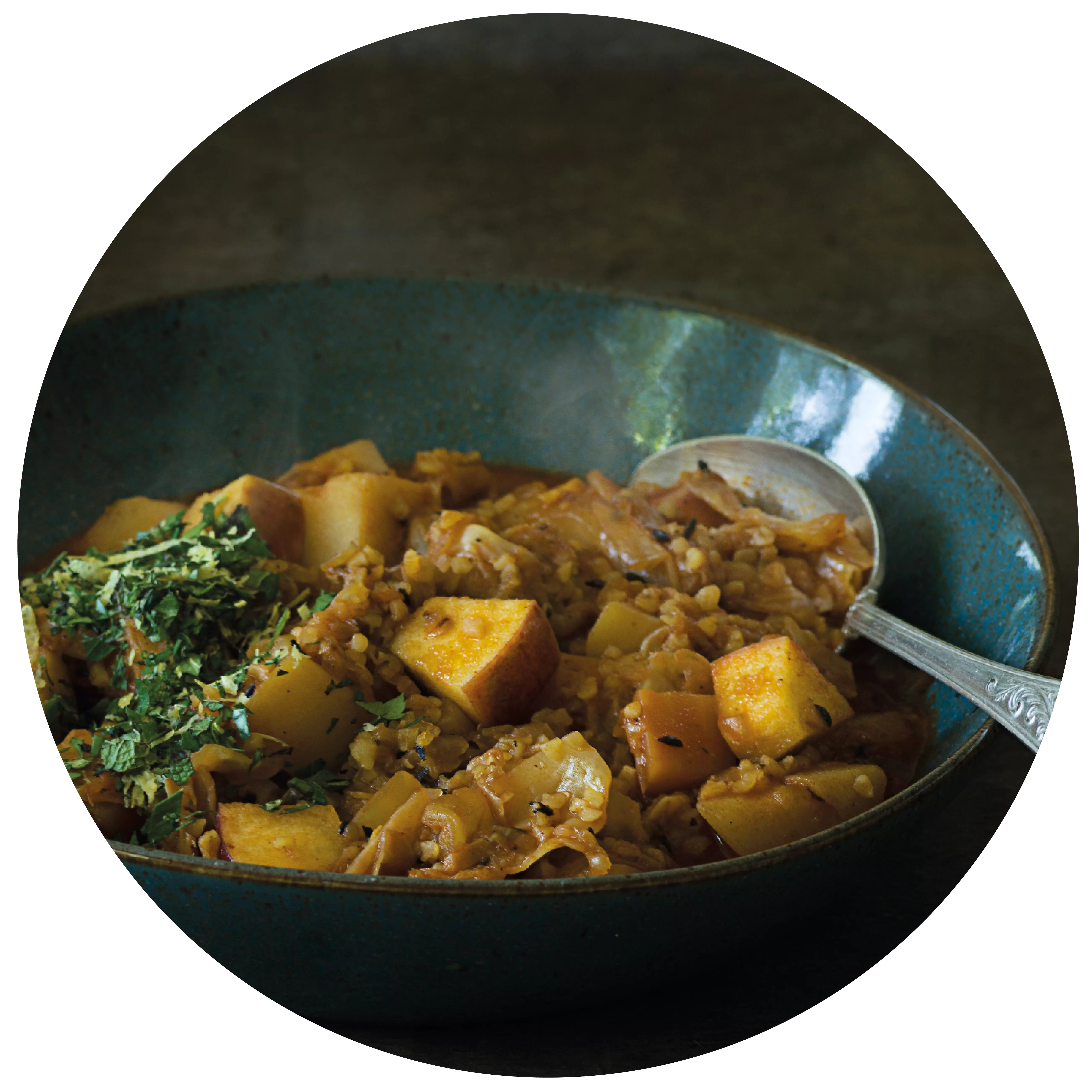
with pears, beans, parsley root and black walnuts Venison medallions
with pears, beans, parsley root and black walnuts
- 12 Stück Rehmedaillions (a 80g)
- 30 Gramm gebratene Speckstreifen
- 200 ml Bechamelsauce
- 3 EL Sonnenblumenöl
- 8 kleine Petersilienwurzeln mit Grün (alternativ Knollensellerie)
- 6 - 8 breite Schnippelbohnen
- 1 große Birne
- 4 - 6 schwarze Walnüsse
- 100 ml Wildfond
- 2 EL Butter
- 2 Stängel glatte Petersilie
- nach Geschmack Salz
Preheat the oven to 180 °C top and bottom heat. Clean, peel and trim the parsley roots. Clean the beans and cut into diagonal pieces. Blanch the parsley roots and beans separately in boiling salted water and rinse immediately in iced water.
Cut the walnuts into eighths and warm in the game stock. Wash the unpeeled pear, cut into eighths, remove the core and cut into thin slices. Fry the venison medallions on both sides in oil, then finish cooking in the oven for approx. 3 - 5 minutes.
In the meantime, toss the beans and parsley roots in melted butter and season with salt. Arrange the vegetables with the black walnuts and pear slices on large plates. Place the medallions on top, garnish with game stock, Béchamel sauce and bacon strips.
Tip: You can make your own black walnuts. To do this, prick the walnuts all over with a fork or skewer and place in water for 10 days. Change the water every day so that the tannic acid can drain off. Boil the nuts 3 times in salted water until they are deep black. Simmer with bay leaves and peppercorns for approx. 20 minutes until soft. Layer in preserving jars and cover with syrup. The nuts can be kept for approx. 1 year.
- Spätburgunder / Pinot Noir (trocken)
- Pinot Gris (trocken)
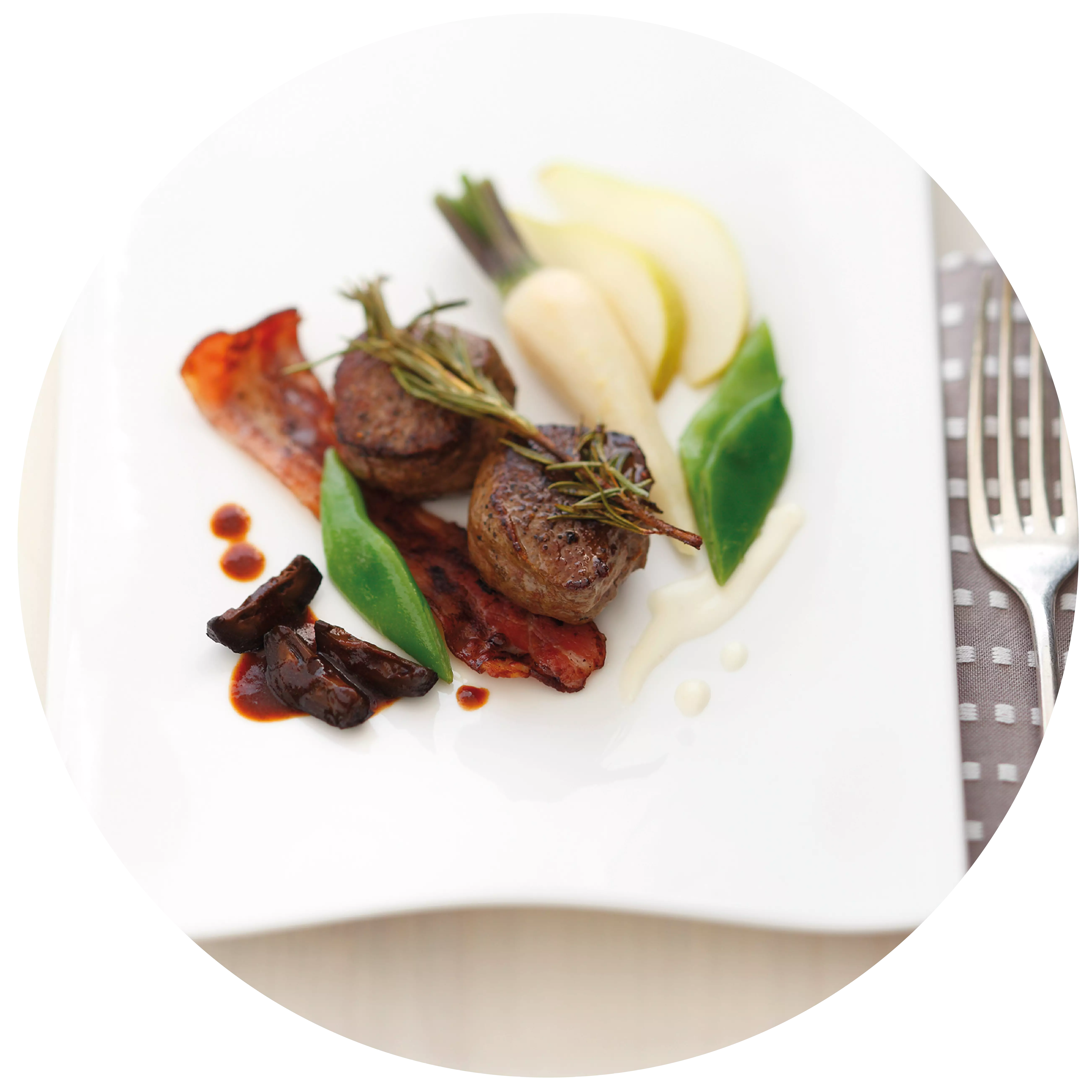
with pumpkin and white wine sauce Pasta with pumpkin and white wine sauce
with pumpkin and white wine sauce
- 750 Gramm Butternut-Kürbis(se)
- 3 kleine Zwiebeln
- 2 Zehen Knoblauch
- 1 Becher Crème fraîche
- 250 ml trockener Weißwein
- 500 ml Gemüsebrühe
- 25 Gramm Parmesan oder ähnlicher Hartkäse
- 400 Gramm Spaghetti oder andere Nudeln
- nach Geschmack Salz, Pfeffer, Zucker
- 4 EL Kürbiskerne, evtl. gehackt
- nach Belieben Muskat, Thymian
Sauté the garlic and onions until translucent. Dice the butternut squash and add, season with pepper and sugar. When the cubes are still firm, pour in the white wine and vegetable stock. Continue cooking until the squash is firm to the bite.
In the meantime, cook and drain the pasta.
Add the thyme, nutmeg, salt and crème fraîche to the boiling pumpkin, bring to the boil and thicken. Stir in the parmesan and season to taste. You can also crush some diced pumpkin to make the sauce sweeter.
Arrange the pasta on plates and top with the pumpkin sauce.
Sprinkle with pumpkin seeds.
- Scheurebe (trocken)

the "Frankfurt Green Sauce" Quiche with herbs
the "Frankfurt Green Sauce"
- 200 Gramm Mehl
- 100 Gramm Butter
- je 1 Bund Kräuter für Frankfurter Grüne Sauce (Petersilie, Kresse, Kerbel, Borretsch, Sauerampfer, Schnittlauch, Pimpernelle)
- 100 - 125 Gramm Schwarzwälder Schinken
- 7 ganze Eier
- 125 ml Sahne
- 100 Gramm Frischkäse
- 1 EL Zitronensaft
- nach Geschmack Salz & Pfeffer
Knead the flour and butter with 4 tbsp water and a teaspoon of salt to form a smooth dough. Line a mould with it and leave to cool for 30 minutes.</p
<p>Hard boil 4 eggs. Wash, drain and finely chop the herbs from the Frankfurt green sauce. Cut the ham into wafer-thin slices and spread on the pastry base. Chop the hard-boiled eggs into small
and spread over the top. Mix the 3 eggs, cream and fresh cheese and season with 1 tbsp lemon juice, salt and pepper, then fold in the herbs. Spread the mixture over the pastry base.
Bake at 180 °C (gas mark 4) on the middle shelf of the oven for about 30 minutes.
- Riesling (trocken)
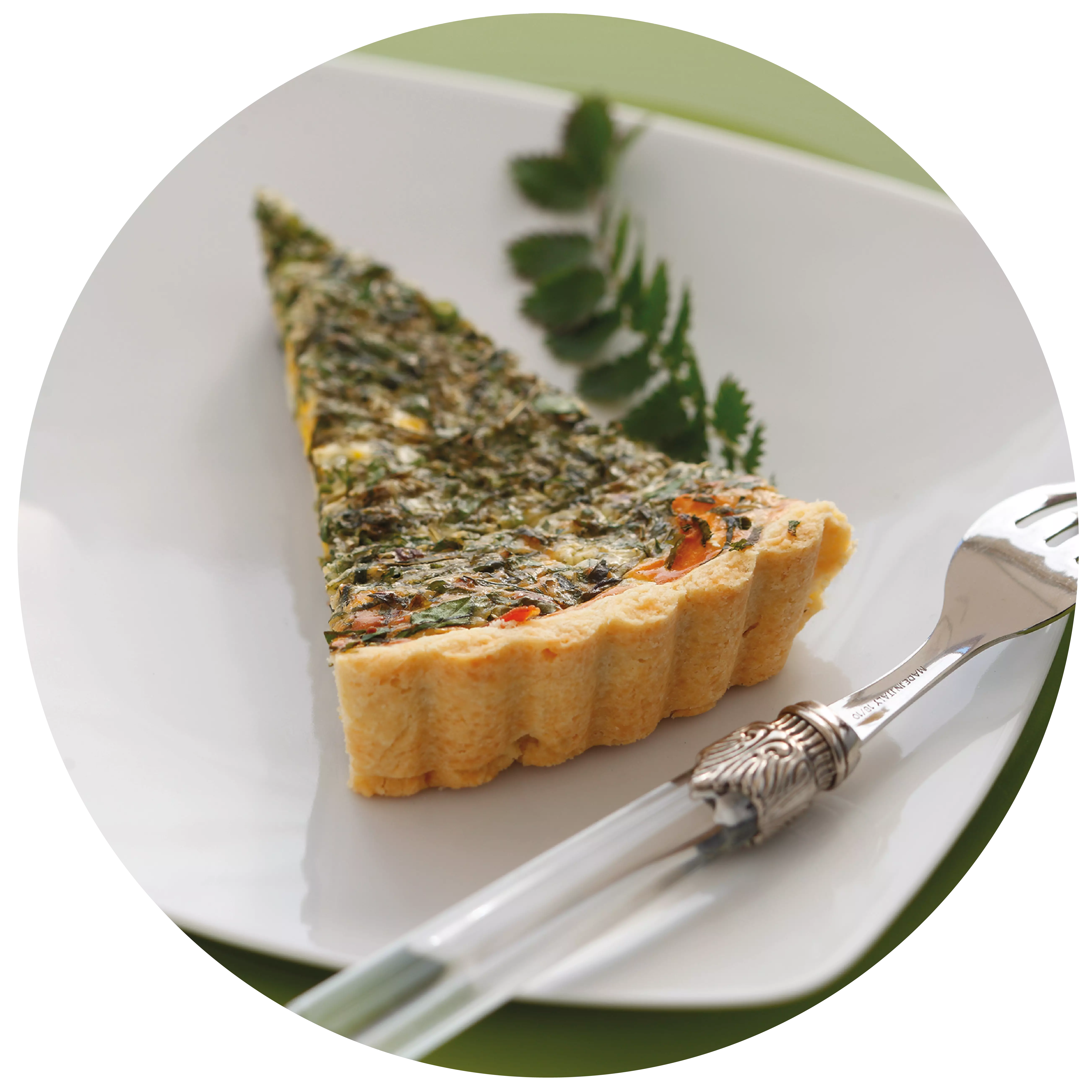
Events
-
Show
winetasting in our winery - blind tasting
Mainz-Hechtsheim



